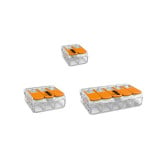CamperJack
Free Member
Lets say I have two puck lights wired in parallel in the ceiling, which come on via one switch.
I then have a pair of wall mounted reading lights with their own switches built into the bases.
Could I splice into the positive and negative wires running to the puck lights (using a scotch lock for example) to power the reading light?
Could the reading light then be switched on while the ceiling lights are switched off and vice versa?
Thanks in advance for answering what must be another of my obvious questions! I hope everyone is keeping well with everything that's going on. Working on my van while the pub is closed is keeping me sane (as I have ever been ). I've been building draws today. I'll not be doing that again in a hurry! Draws are hard.
). I've been building draws today. I'll not be doing that again in a hurry! Draws are hard. 
I then have a pair of wall mounted reading lights with their own switches built into the bases.
Could I splice into the positive and negative wires running to the puck lights (using a scotch lock for example) to power the reading light?
Could the reading light then be switched on while the ceiling lights are switched off and vice versa?
Thanks in advance for answering what must be another of my obvious questions! I hope everyone is keeping well with everything that's going on. Working on my van while the pub is closed is keeping me sane (as I have ever been


